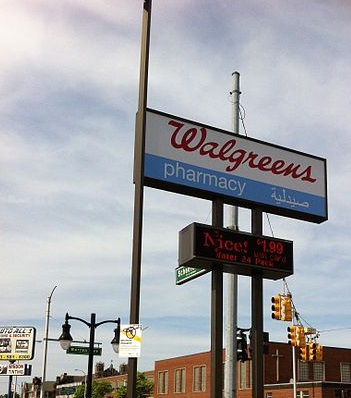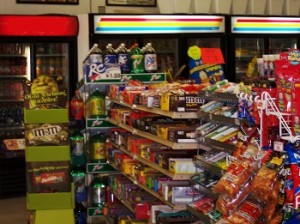The pharmacy chain has decided to boost its in-store offerings through the use of a customer’s own smartphone.
Now that about three quarters of all adults in the United States have smartphones, Walgreens has decided that this is an opportunity that is too good to pass up and it has now added mobile apps to its shopping experience in order to make sure that it is as easy and convenient as possible.
Three out of every four people in the U.S. also have a Walgreens within five miles of where they live.
This means that most people have both a smartphone and a local Walgreens, making mobile apps an ideal opportunity to reach out to customers and improve their experience in-store. By doing this, the chain is also hoping that it will encourage people to buy more, while they’re there. The idea has to do with providing the ultimate in convenience. This smartphone application makes it possible to conduct searches for products in the store, to learn more about what they’re seeing in front of them with connected devices, and even to obtain savings opportunities with digital coupons.
The mobile apps also allow customers to fill their prescriptions with a few taps of their smartphones.
 At the time that this article was written, Walgreens had not revealed how many users its smartphone app actually had, but the application continually finds itself among the top 10 lifestyle apps within the Google Play and iOS stores.
At the time that this article was written, Walgreens had not revealed how many users its smartphone app actually had, but the application continually finds itself among the top 10 lifestyle apps within the Google Play and iOS stores.
According to the Walgreens director of digital commerce product management, Adam Crouch, “Offline and online have blurred in the minds of consumers, so almost everything we do digitally ties back to stores in some way.” He went on to add that “We’re figuring out how to use digital to take convenience to the next level.”
The pharmacy chain now has a team that is dedicated to rebuilding the company based on a kind of “digital DNA,” said Crouch, who also pointed out that the company’s primary focus is on customer convenience. By putting a digital strategy into place, it helps to make sure that Walgreens will be more flexible and capable of adapting to the latest consumer behavior and expectation trends, particularly when it comes to the shape of its mobile app.
Around the world, these shops are starting to bring applications forward to provide customers a broader service range.
In Taiwan, two large convenience store chains are now working to launch their own mobile apps in order to offer a broader service range to shoppers, and to take advantage of what online shopping can do for their businesses.
Should they be successful, this could have a notable impact on the convenience store industry in the country.
That said, this trend toward mobile apps by convenience stores is not exclusive to Taiwan. Certain retailers in Japan and the United States have also revealed that they are working toward the development of various ways to provide their shoppers with a multichannel experience by bringing in-store and online commerce together. These have involved rather aggressive investments in mergers and acquisitions with various e-commerce businesses.
The natural place for the mobile apps trend to find its start is in Taiwan, due to the nature of its convenience store sector.
 That country has the greatest concentration of this form of retail stores among all countries on the globe. The directions taken by its convenience chains frequently suggest the types of moves that will be made by other chains around the world. Now that it has placed such a serious and evident focus on mobile applications, it is easy to believe that others will follow suit.
That country has the greatest concentration of this form of retail stores among all countries on the globe. The directions taken by its convenience chains frequently suggest the types of moves that will be made by other chains around the world. Now that it has placed such a serious and evident focus on mobile applications, it is easy to believe that others will follow suit.
The company behind the largest convenience store chain in Taiwan, President Chain Store Corp, has announced that it is currently developing a big data cloud and computing system, and that it will be incorporating multichannel payments solutions, as well. This will allow for a mobile payments and m-commerce experience at all of its 5,000 outlets, said the company.
The second largest convenience store chain in the country, Taiwan FamilyMart Co., has said that it is launching a trial for its mobile apps, which will be brought to its 2,929 stores, some of which have been equipped with iBeacons in order to offer a geolocation based component to its experience. This way, the iBeacons can detect when a customer with the app has entered the store and can send that individual mobile marketing communications such as information about promotions, coupons, and offers.
 At the time that this article was written, Walgreens had not revealed how many users its smartphone app actually had, but the application continually finds itself among the top 10 lifestyle apps within the Google Play and iOS stores.
At the time that this article was written, Walgreens had not revealed how many users its smartphone app actually had, but the application continually finds itself among the top 10 lifestyle apps within the Google Play and iOS stores.
 That country has the greatest concentration of this form of retail stores among all countries on the globe. The directions taken by its convenience chains frequently suggest the types of moves that will be made by other chains around the world. Now that it has placed such a serious and evident focus on mobile applications, it is easy to believe that others will follow suit.
That country has the greatest concentration of this form of retail stores among all countries on the globe. The directions taken by its convenience chains frequently suggest the types of moves that will be made by other chains around the world. Now that it has placed such a serious and evident focus on mobile applications, it is easy to believe that others will follow suit.